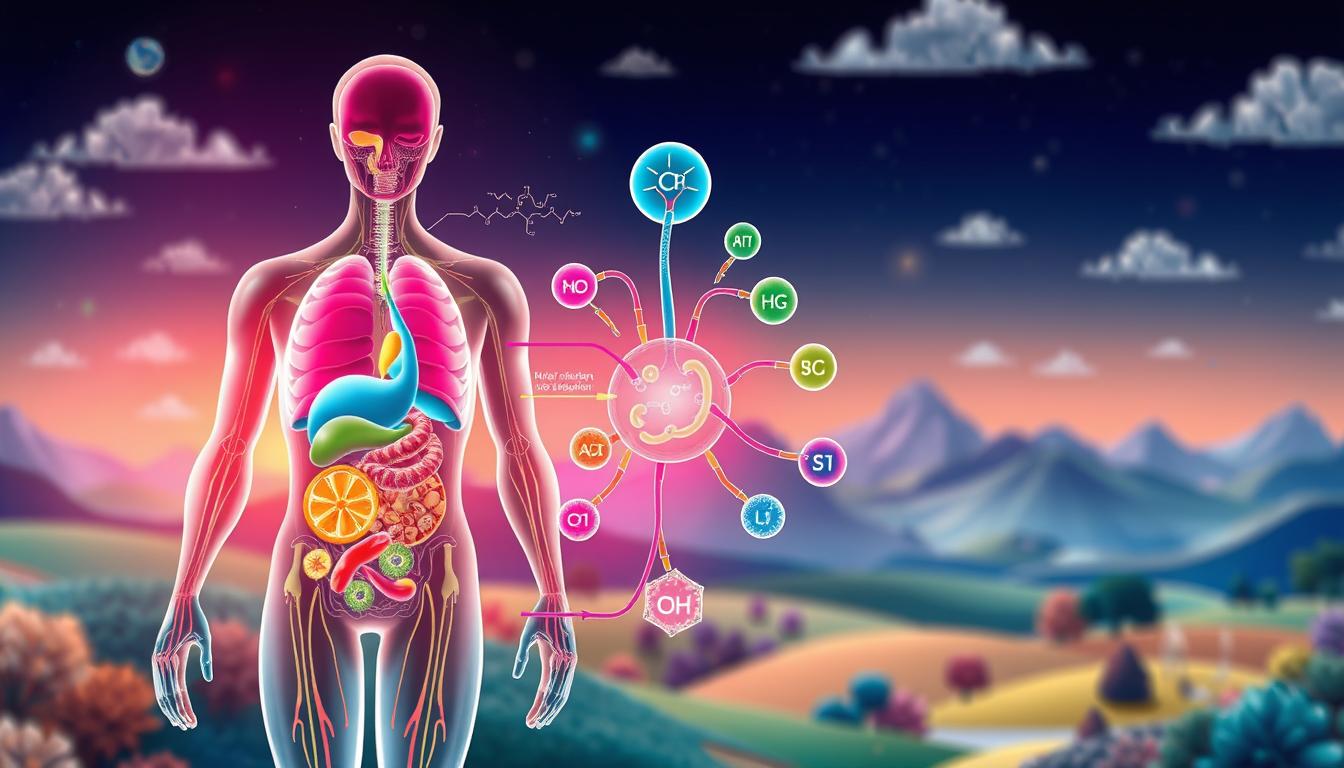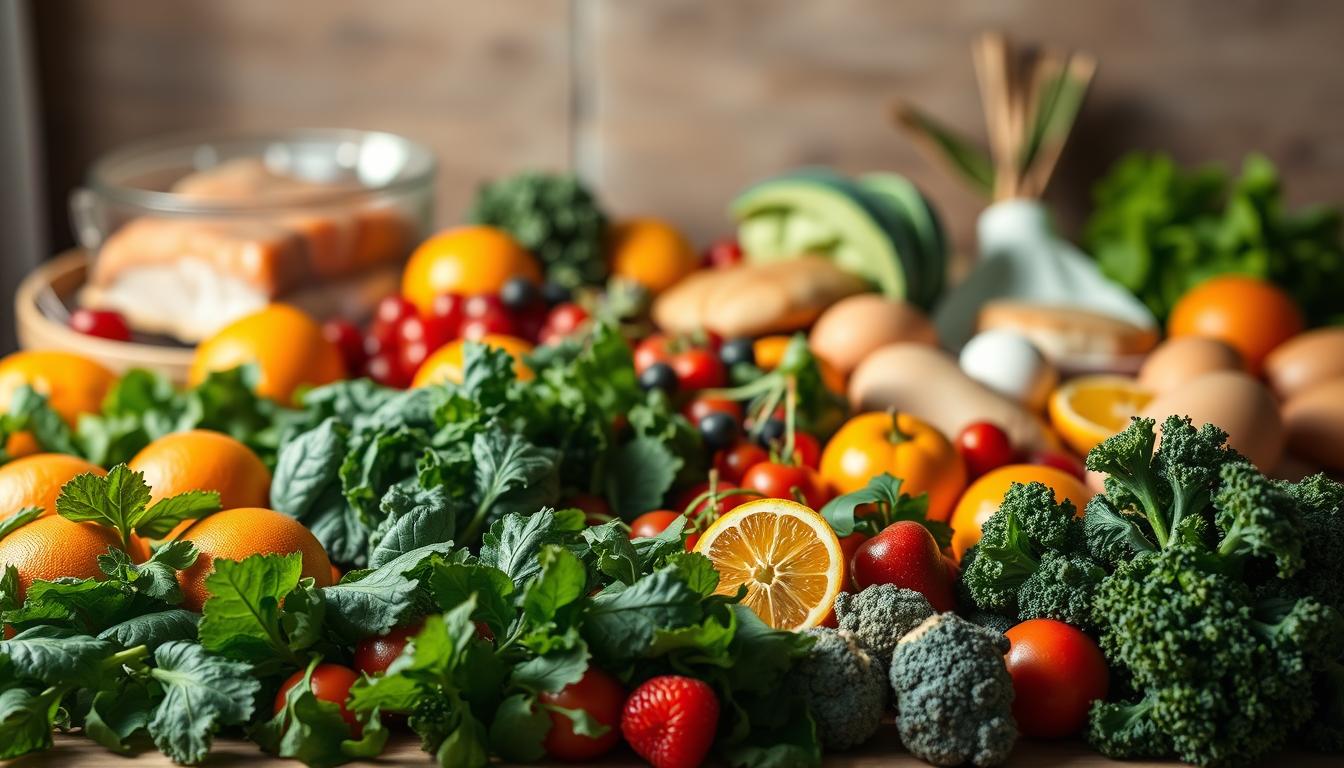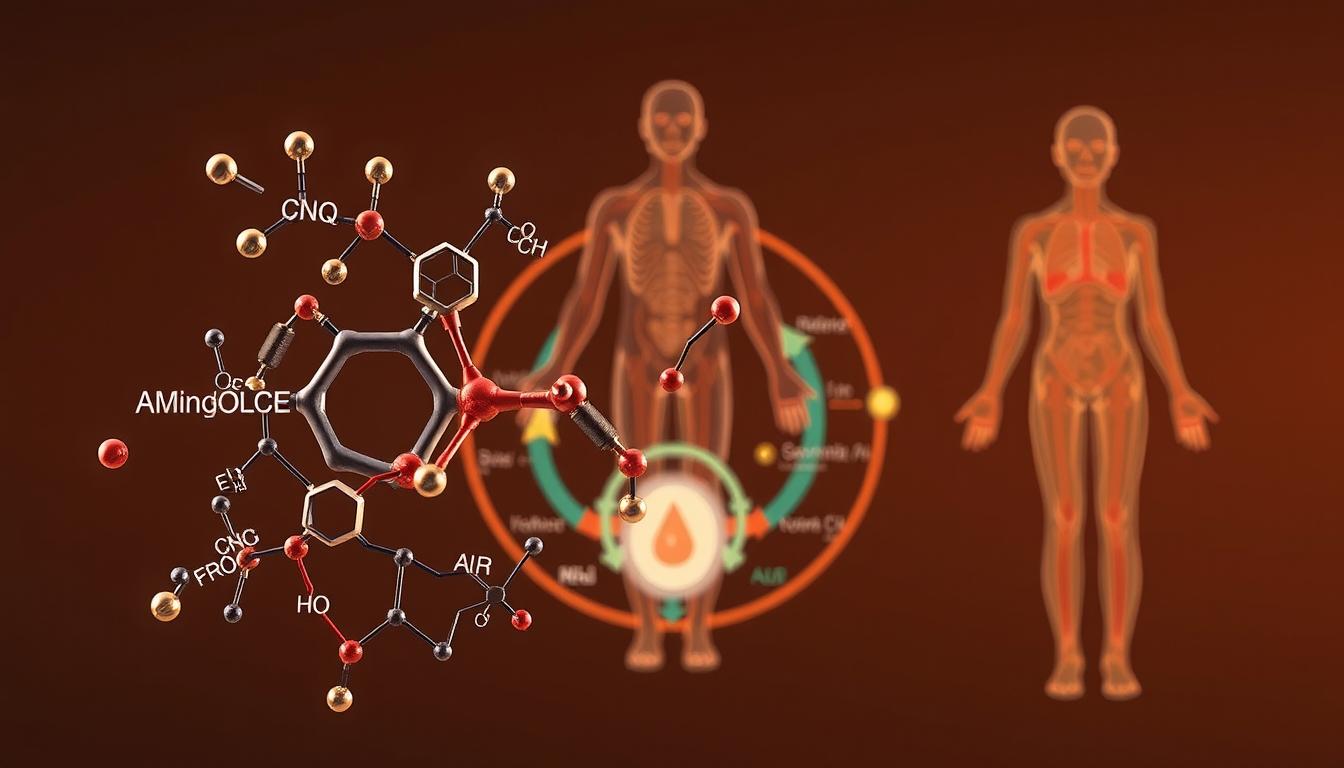Did you know your body burns calories even while you sleep? This process, called metabolism, is your internal engine that converts food into energy. It keeps you alive and active, but factors like age, genetics, and lifestyle can slow it down.
Your basal metabolic rate (BMR) determines how many calories you burn at rest. For most people, this ranges between 1,600 and 3,000 calories daily. However, small changes in your diet and habits can make a big difference.
Eating protein-rich foods, for example, can increase thermogenesis, where your body uses 20-30% of the food’s energy just to digest it. Building muscle also helps, as each pound of muscle burns 6-8% more calories at rest.
Ready to take control? Let’s explore science-backed strategies to enhance your metabolism and support your weight loss goals.
Key Takeaways
- Metabolism converts food into energy for daily functions.
- Age, genetics, and lifestyle impact your metabolic rate.
- Protein-rich foods increase thermogenesis and calorie burn.
- Muscle mass boosts resting calorie expenditure.
- Diet, exercise, and sleep are key to improving metabolism.
What is Metabolism and Why Does It Matter?
Your body’s internal engine, known as metabolism, plays a vital role in your daily life. It’s the process that converts food into energy, fueling everything from breathing to physical activity. Without it, your body wouldn’t function.

Understanding the Basics of Metabolism
Your basal metabolic rate (BMR) is the number of calories your body burns at rest. It accounts for 60-75% of your total daily energy expenditure. For example, if your BMR is 1,500 calories, you’ll burn that amount even if you’re inactive.
Active calorie expenditure includes physical activities like walking, running, or exercising. High-intensity interval training (HIIT) can burn 25-30% more calories than other exercises. Muscle also plays a role—it burns three times more energy than fat.
Factors That Influence Your Metabolic Rate
Several factors affect how efficiently your metabolism works:
- Age: After 30, your metabolic rate declines by 2-3% per decade.
- Body composition: Muscle burns more calories than fat, even at rest.
- Genetics: Enzyme production and hormone levels vary by individual.
- Thyroid function: This gland regulates your metabolic process.
- Hormones: Insulin and leptin levels impact how your body stores and uses energy.
| Type | Calories Burned | Examples |
|---|---|---|
| Basal Metabolic Rate (BMR) | 1,600 – 3,000 calories/day | Breathing, digestion |
| Active Calorie Expenditure | Varies by activity | Walking, HIIT, strength training |
Top Foods That Naturally Boost Your Metabolism
Certain foods can help your body work more efficiently. By incorporating specific ingredients into your diet, you can support your energy levels and enhance calorie burning. Let’s explore some of the best options backed by science.

Fish and Shellfish: Rich in Omega-3 and Protein
Fish like salmon and mackerel are packed with omega-3 fatty acids and high-quality protein. A 3-ounce serving of salmon provides 22 grams of protein, which helps increase thermogenesis—the process where your body burns calories during digestion. Omega-3s also reduce inflammation, supporting a healthier metabolic rate.
For convenience, shelf-stable options like canned tuna or sardines are excellent choices. Grilling or baking these foods preserves their nutritional content while adding flavor.
Legumes: A Powerhouse of Protein and Fiber
Legumes, such as black beans and lentils, are rich in both protein and fiber. One cup of black beans offers 15 grams of protein and resistant starch, which aids digestion and keeps you full longer. These foods are also versatile—try air-frying chickpeas for a crunchy snack or adding lentils to soups and stews.
Their high fiber content helps regulate blood sugar levels, preventing energy crashes and supporting sustained calorie burning.
Chili Peppers: Spice Up Your Metabolism
Chili peppers contain capsaicin, a compound that can temporarily boost your body temperature and increase calorie burn by up to 50 calories per day. Jalapeños, for example, can raise your body temperature by 1°F, enhancing your metabolic rate.
Pairing chili peppers with legumes creates a synergistic effect, maximizing the benefits of both foods. Add a dash of spice to your meals for an extra metabolic kick.
The Role of Protein in Increasing Metabolism
Protein plays a crucial role in how your body processes energy. It’s not just about building muscle—it’s also essential for thermogenesis, the process where your body burns calories to digest food. Compared to fats and carbs, protein increases thermic effect of food (TEF) by up to five times.

When you consume protein, your body uses 20-30% of its energy just to break it down. This makes it a powerful tool for boosting your metabolic rate. Additionally, protein helps preserve lean mass during weight loss, ensuring you burn fat instead of muscle.
Why Protein is Essential for Thermogenesis
Thermogenesis is the heat your body generates during digestion. Protein requires more energy to process than carbs (5-10%) or fats (0-3%). This means every gram of protein you consume helps your body burn more calories naturally.
“Protein’s thermic effect can significantly enhance your daily calorie burn, making it a key component of any diet.”
For example, a 30-gram serving of protein can increase your energy expenditure by up to 100 calories. This makes it an effective strategy for weight management and maintaining a healthy metabolic rate.
Best Protein Sources for a Metabolic Boost
Not all protein sources are created equal. Here are some of the best options to support your intake and maximize thermogenesis:
- Greek Yogurt: With 17 grams of protein per serving, it’s a quick and versatile option.
- Edamame: A plant-based choice offering 18 grams of protein per cup.
- Grass-Fed Whey: A high-quality option for post-workout recovery, providing 25 grams per scoop. Learn more about grass-fed whey.
- Tempeh: A fermented soy product with 20 grams of protein per 100 grams.
- Cottage Cheese: Helps prevent muscle loss during dieting, with 28 grams per cup.
| Protein Source | Protein Content | Benefits |
|---|---|---|
| Greek Yogurt | 17g/serving | High in probiotics |
| Edamame | 18g/cup | Rich in fiber |
| Grass-Fed Whey | 25g/scoop | Supports muscle recovery |
| Tempeh | 20g/100g | Fermented for gut health |
| Cottage Cheese | 28g/cup | Prevents muscle loss |
Timing matters too. Consuming 30 grams of protein within two hours after a workout can optimize muscle repair and calorie burn. Whether you’re vegetarian or not, there are plenty of options to meet your protein needs and support your metabolism.
Exercise Strategies to Enhance Your Metabolism
Want to rev up your internal engine? Exercise is the key. By incorporating the right workouts into your routine, you can boost your metabolic rate and burn calories more efficiently. Let’s explore two proven strategies: high-intensity interval training and strength training.

High-Intensity Interval Training (HIIT)
HIIT is a powerful way to maximize calorie burn in less time. This workout alternates between short bursts of intense activity and brief recovery periods. Studies show HIIT can burn calories 25-30% more than steady-state exercises like jogging.
Here’s a sample HIIT routine:
- 30 seconds of sprinting followed by 1 minute of walking.
- Repeat this cycle 8 times for a quick, effective workout.
HIIT also increases post-exercise oxygen consumption (EPOC), keeping your metabolic rate elevated for hours after you finish.
Strength Training: Build Muscle, Burn Calories
Strength training is another essential strategy. Building muscle helps your body burn calories even at rest. Each pound of muscle burns 6-10 calories per day, making it a long-term investment in your metabolism.
Focus on compound lifts like deadlifts and bench presses. These exercises engage multiple muscle groups, maximizing efficiency. Resistance bands are a great alternative to free weights, offering versatility and convenience.
Allow 48 hours of recovery between working the same muscle groups. Tracking your progress with tools like Fitbit or Apple Watch can help you stay motivated and measure improvements.
Lifestyle Changes That Support a Healthy Metabolism
Small daily habits can make a big difference in how your body functions. From staying hydrated to prioritizing rest, these changes can enhance your overall health and energy levels. Let’s explore two key areas: hydration and sleep.

Stay Hydrated: The Importance of Water
Drinking enough water is essential for your body to function optimally. Studies show that consuming 17 ounces of water can increase fat oxidation by 30%. Staying hydrated also supports cellular processes, including energy production and waste removal.
A simple formula to calculate your daily intake is to divide your weight in pounds by two. For example, if you weigh 150 pounds, aim for 75 ounces of water daily. Adding electrolytes can further enhance hydration and support cellular metabolism.
Get Enough Sleep: Rest for Metabolic Efficiency
Sleep is just as important as diet and exercise for maintaining a healthy body. The CDC recommends at least seven hours of sleep nightly. Falling short of this can reduce leptin levels by 15%, a hormone that regulates hunger and energy balance.
To improve sleep quality, consider using blue light-blocking glasses in the evening. Herbal teas like chamomile can also help reduce cortisol levels, promoting relaxation. Aligning your schedule with your circadian rhythm ensures deeper, more restorative sleep.
By focusing on hydration and rest, you can support your body’s natural processes and maintain a balanced lifestyle.
Natural Drinks That Can Boost Your Metabolism
What you drink can have a significant impact on how your body processes energy. Certain beverages, like green tea and coffee, are known for their ability to enhance calorie burning and support a healthy lifestyle. Let’s explore how these drinks can work for you.

Green Tea: A Metabolism-Friendly Beverage
Green tea is a popular choice for those looking to support their energy levels. It contains about 28mg of caffeine per cup, which can help increase alertness and focus. Additionally, green tea is rich in antioxidants like EGCG, which has been shown to enhance fat oxidation.
Matcha, a powdered form of green tea, offers three times the amount of EGCG compared to regular green tea. Brewing green tea at 175°F ensures you get the most out of its nutrients without bitterness. Pairing it with L-theanine, found in yerba mate, can create a calming yet energizing effect.
“Green tea’s combination of caffeine and antioxidants makes it a powerful ally for fat burning and overall health.”
Coffee: Caffeine’s Role in Fat Burning
Coffee is another excellent option for boosting your energy expenditure. Studies show that it can increase your metabolic rate by up to 11%. The caffeine in coffee stimulates the nervous system, promoting fat breakdown and energy production.
Cold brew and espresso differ in their amount of caffeine, with cold brew often being smoother and less acidic. To avoid disrupting sleep, it’s best to avoid coffee after 2 PM. Black coffee, without additives, is the healthiest choice for maximizing its fat burning benefits.
| Drink | Caffeine Content | Key Benefits |
|---|---|---|
| Green Tea | 28mg/cup | Rich in antioxidants, enhances fat oxidation |
| Matcha | 70mg/cup | 3x EGCG compared to regular green tea |
| Cold Brew Coffee | 200mg/cup | Smooth, less acidic, high in caffeine |
| Espresso | 63mg/shot | Quick energy boost, concentrated caffeine |
By incorporating these drinks into your routine, you can support your body’s natural processes and maintain a balanced lifestyle. Remember to cycle your intake to prevent tolerance and maximize their benefits.
Common Myths About Metabolism and Weight Loss
Many misconceptions surround how your body processes energy and burns fat. These myths can lead to ineffective strategies and frustration. Let’s explore two widely believed ideas and uncover the truth behind them.
Debunking the Myth of Starvation Mode
The idea of “starvation mode” suggests that eating too few calories slows your metabolic rate drastically. While metabolic adaptation does occur, it’s not as extreme as many believe. Research shows that significant changes only happen when daily intake drops below 1,200 calories.
Here’s what actually happens:
- Your body reduces non-exercise activity thermogenesis (NEAT), which accounts for 15% of total daily energy expenditure.
- Adaptive thermogenesis kicks in, conserving energy by slowing certain processes.
- A sustainable calorie deficit of 500 calories per day is recommended for healthy weight loss.
“Metabolic adaptation is a survival mechanism, not a roadblock to progress.”
The Truth About Spicy Foods and Metabolism
Spicy foods, particularly those containing capsaicin, are often touted as powerful metabolism boosters. While they do have a slight effect, the impact is minimal. Capsaicin burns only about 10 calories per meal, which is unlikely to lead to significant weight loss.
Here’s what you should know:
- Pepper tolerance builds over time, reducing the effect of capsaicin.
- Some studies suggest a placebo effect may contribute to perceived benefits.
- For long-term results, focus on sustainable habits rather than quick fixes.
| Myth | Reality |
|---|---|
| Starvation mode drastically slows metabolism | Metabolic adaptation occurs at |
| Spicy foods significantly boost metabolism | Capsaicin burns only 10 calories/meal |
By understanding these facts, you can make informed decisions about your diet and exercise routine. Focus on evidence-based strategies for lasting results.
Conclusion: Take Charge of Your Metabolism Today
Taking control of your body’s energy system starts with small, actionable steps. By focusing on nutrition, activity, and recovery, you can create a sustainable plan for long-term success. Research shows an 80% success rate when combining diet and exercise, making it a proven strategy for weight loss and overall health.
Consider a personalized approach through metabolic testing to understand your unique needs. Tools like MyFitnessPal and Oura Ring can help you track progress and stay accountable. For a structured start, try a 30-day challenge to build momentum.
Transitioning to a maintenance phase requires consistency and professional guidance. Use a consultation checklist to ensure you’re on the right path. With the right plan, you can take charge of your metabolism today and achieve lasting results.